Software Quality Assurance (SQA) has emerged as a pivotal force in modern software development, continually evolving to meet new trends and technologies. Understanding this evolution empowers us to ensure that products meet functional, security, and usability standards while adapting to rapid technological advancements. From its origins in manufacturing quality control to today’s AI-driven automation and quantum computing innovations, SQA is reshaping how organizations deliver reliable, high-performance software. This guide delves into the evolution of SQA, the cutting-edge trends shaping the field, and the core components of modern quality assurance practices.
Cutting-Edge Trends Reshaping SQA
The rapid advancement in technology has introduced new dimensions to software quality assurance. Here are the groundbreaking trends revolutionizing the field:
The Evolution of SQA
Software Quality Assurance has evolved significantly, transitioning from traditional manual testing methods to modern automated and AI-driven approaches. Initially, SQA was primarily focused on debugging and defect identification at the final stages of development. However, with the advent of Agile and DevOps, quality assurance has undergone a paradigm shift, becoming an integral part of the software development process. This shift has strongly emphasized continuous testing, a practice that reassures us of the reliability of modern software, security, performance optimization, and compliance with industry standards, ensuring the delivery of robust and efficient software solutions.
Quantum Computing
Quantum computing is poised to revolutionize testing through:
Accelerated Test Case Generation: Quantum algorithms can swiftly generate a diverse range of test scenarios in milliseconds, effectively covering potential edge cases and outpacing traditional methods, thus enhancing software quality assurance.
Advanced Complex System Simulation: Quantum systems excel at modeling intricate environments, such as financial models and AI algorithms. This leads to greater accuracy in testing, particularly in high-stakes industries.
Improved Security Testing: The immense power of quantum computers threatens traditional encryption, prompting software quality assurance teams to adopt post-quantum cryptographic testing strategies to protect sensitive data and maintain system integrity.
Cloud-Based Testing
Cloud-based testing platforms have rapidly gained popularity due to their scalability, cost-effectiveness, and ease of use. They allow testers to run multiple test cases simultaneously across various devices, operating systems, and network conditions. This ensures thorough software validation without significant infrastructure investments, ultimately enhancing the quality of software products.
DevSecOps
Integrating security into DevOps pipelines offers several key advantages:
Shift-Left Security: By identifying vulnerabilities during the coding phase rather than after deployment, teams can address security issues early, minimizing costly post-release fixes.
Collaborative Workflows: Security becomes a collective responsibility among quality assurance, development, and security teams, enhancing accountability and improving compliance and threat mitigation.
Automated Security Scans: Tools like SAST and DAST can be embedded within CI/CD workflows to automate security checks; this ensures that each code iteration is thoroughly examined for vulnerabilities while maintaining rapid development cycles.
AI-Driven Automation
Artificial Intelligence (AI) is revolutionizing SQA by introducing predictive analytics, intelligent test case generation, and automated defect detection. AI-driven tools analyze historical test data to predict potential failures, optimize test coverage, and accelerate the software release cycle.
Green QA
As sustainability becomes a global concern, Green QA focuses on minimizing the environmental impact of software testing. This includes optimizing energy consumption in test environments, reducing hardware dependency, and leveraging eco-friendly computing resources. Green QA is a new trend in SQA that aligns with the global push for sustainability and can be a key consideration for organizations looking to adopt modern SQA practices.
Techniques in Software Quality Assurance
Review
Reviewing software documentation systematically at various stages is vital for uncovering defects and ensuring quality standards, ultimately aligning the project with its goals and enhancing software reliability.
Auditing
Auditing is essential for evaluating processes to ensure compliance with established standards and policies. Internal and external audits meticulously verify adherence to these guidelines, promoting accountability and facilitating continuous improvement within the organization.
Code Inspection
Code inspections are formal reviews that use static testing to identify bugs and prevent defects from entering the later stages of development. Conducted by trained mediators, these inspections are based on predefined rules and checklists.
Design Inspection
Design inspections are vital in software development. They evaluate the software’s design through a detailed checklist of requirements, specifications, and performance metrics. This process ensures alignment with project goals and industry standards, helps identify potential issues early, and promotes the creation of effective software solutions.
Simulation
Simulation models replicate real-life conditions to analyze system behavior in a virtual environment. They offer a safe platform for testing complex scenarios that may be too risky or impractical to conduct in real life, enabling valuable insights and process optimization.
Functional Testing
Functional testing is essential in software development. It validates the application’s functionality from the user’s perspective. It ensures the software meets system specifications and performs as expected, identifying discrepancies between desired and actual outcomes for a reliable user experience.
Standardization
Standardization ensures that software development follows established standards, reducing ambiguity and guesswork. This enhances quality by making processes more predictable and reliable.
Static Analysis
Static analysis uses automated tools to examine code without executing it. This technique identifies vulnerabilities and validates code quality, helping to prevent defects early in the development cycle.
Walkthroughs
Walkthroughs are informal peer reviews in which developers guide team members through documents or code to identify issues and gather feedback. This practice enhances code quality and promotes continuous improvement by fostering a culture of collaboration and learning within the development team. Walkthroughs are a key component of modern SQA strategies focusing on iterative development and continuous learning.
Unit and Stress Testing
Unit testing ensures complete code coverage by testing each path and condition and validating individual components. This practice is fundamental to SQA as it ensures that each part of the software functions as intended, contributing to the system’s overall reliability. On the other hand, stress testing evaluates performance under heavy loads, assessing system robustness. These practices ensure software functionality and reliability, making them essential components of modern SQA strategies.
Core Components of Modern SQA
Organizations must adopt a holistic approach, integrating modern methodologies and cutting-edge tools to achieve superior software quality. The following components are essential to modern SQA strategies:
Agile and Continuous Testing Methodologies
Agile methodologies have revolutionized software development by promoting iterative development, which allows teams to identify and address defects in real time. A key aspect of Agile is continuous testing, a practice that ensures code changes are tested immediately, thereby reducing integration issues and accelerating time to market. Implementing CI/CD (Continuous Integration/Continuous Deployment) pipelines enhances test automation, enabling seamless software updates.
Risk-Based Testing Strategies
Risk-based testing prioritizes test cases based on software defects’ potential impact and likelihood. By focusing on critical functionalities and high-risk areas, teams can optimize their testing efforts, ensuring maximum coverage while minimizing redundant test cases. This approach enhances software reliability and mitigates business risks.
Advanced Test Automation Frameworks
Modern SQA heavily relies on automation frameworks to enhance test efficiency and accuracy. Popular frameworks like Selenium, Cypress, and Appium facilitate cross-platform testing, while AI-powered frameworks introduce self-healing test scripts that adapt to UI changes. Automated regression testing ensures stability in rapidly evolving software environments.
Conclusion
Software Quality Assurance is no longer just about identifying bugs—it’s a strategic discipline that is superior in software performance, security, and user satisfaction. As technology evolves, SQA must continuously adapt to new trends, including AI-driven automation, cloud-based testing, and DevSecOps. By leveraging modern methodologies and tools, businesses can unlock excellence in software quality and stay ahead in the competitive digital landscape.




